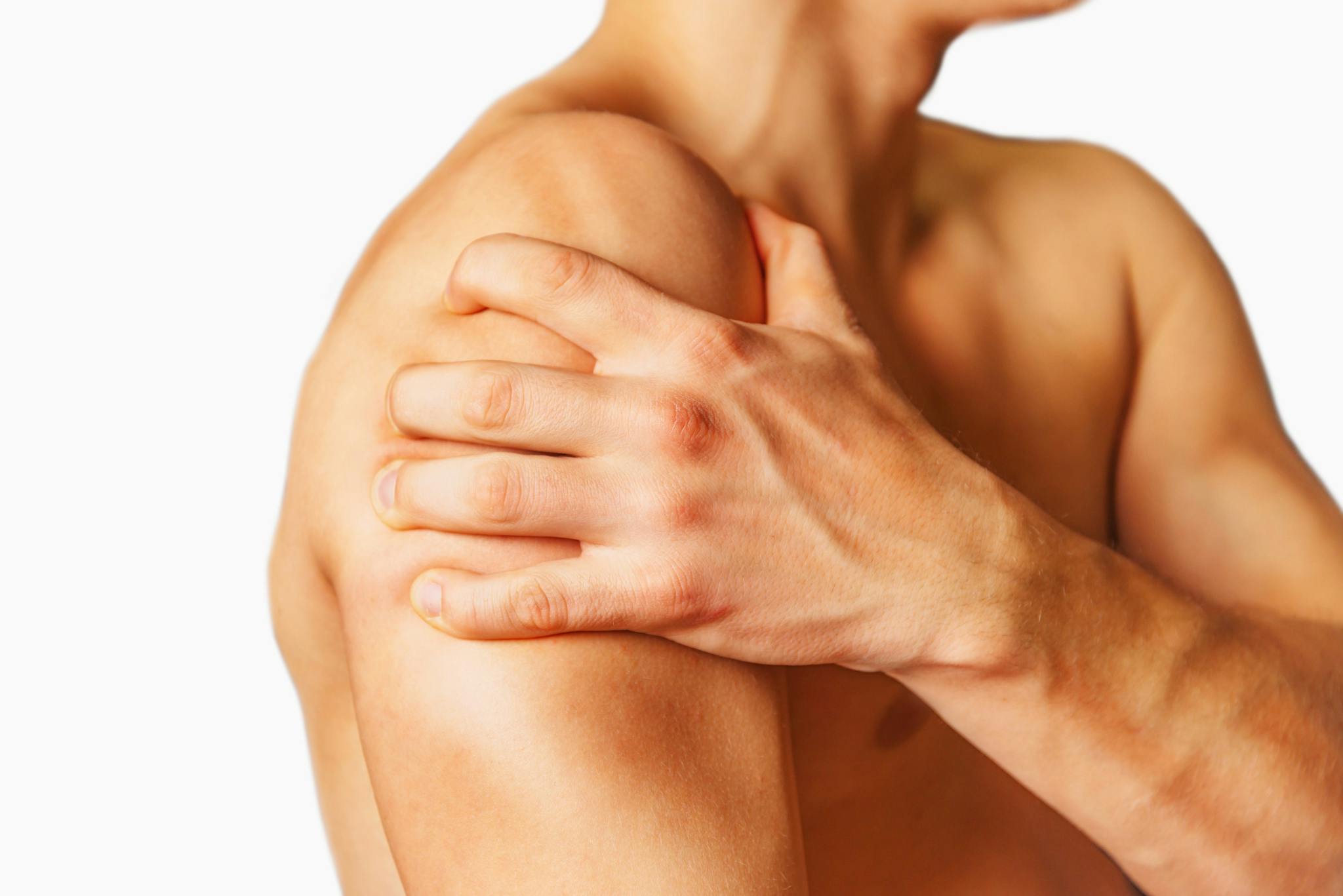
2024-07-12T16:54:51
Sunscreen Travel Tips
- Dermatology
August 16, 2016 | Orthopedics

If you have a shoulder problem, you already know how pain, stiffness and dysfunction make even the smallest tasks – like combing your hair or getting something off the top shelf – nearly impossible.
Shoulder arthroscopy is a medical procedure that can help your doctor get to the bottom of your shoulder problem.
Shoulder arthroscopy is a minimally invasive procedure that surgeons use to repair a damaged shoulder and restore function. Arthroscopy helps your doctor diagnose your condition, develop a treatment plan and help you recover easier and faster than ever before.
Doctors began performing shoulder arthroscopies in the 1970s. Throughout the years, advances in medical technology have made shoulder arthroscopy safe and effective. Surgeons now perform more than 1.4 million shoulder arthroscopies globally each year.
Arthroscopy is especially well-suited for the treatment of shoulder problems because of the unique and complex anatomy of your shoulder, which is a ball-and-socket joint. The “ball” part of the shoulder joint is the rounded head of your upper arm bone that fits into the shallow socket of your shoulder blade. Muscles, tendons and cartilage keep these bones in place and moving well.
Most shoulder problems are the result of injury, overuse and age-related wear and tear, according to the American Academy of Orthopedic Surgeons (AAOS). These conditions affect different parts of your shoulder, including your rotator cuff tendons, labrum, articular cartilage and other soft tissues surrounding your shoulder joint.
Your rotator cuff is a group of muscles and tendons in your shoulder that connect your upper arm to your shoulder blade. The muscles allow your shoulder to rotate while the tendons keep your shoulder stable. Your labrum is a piece of rubbery cartilage tissue attached to the rim of your shoulder socket; it keeps the ball of the joint snugly in place in the socket. Articular cartilage is the smooth, white tissue covering the ends of bones where they come together to form a joint. This cartilage allows your bones to glide over one another as you move your joints.
Injury or disease of your shoulder can damage the muscles, bones, cartilage and tendons of the shoulder joint. The direct effects of this damage can cause dysfunction that prevents you from participating in activities that require you to lift your arm above your head, such as throwing a ball, swimming or even reaching for the top shelf.
Disease and injury can also cause problems indirectly. Inflammation, for example, is a normal physiological response to injury or disease. Inflammation helps protect the affected area from further injury, triggers the immune system to control infection and facilitates the healing process. Inflammation in an injured shoulder, however, can cause swelling, pain and stiffness.
Shoulder arthroscopy allows orthopedic surgeons to treat painful shoulder conditions that do not respond to non-surgical treatments, such as rest, physical therapy, and anti-inflammatory medications or injections.
There are two basic types of shoulder surgery: open and arthroscopic.
The traditional open surgical incision is quite long, measuring several centimeters in some cases. After making the incision over the patient’s shoulder, the surgeon detaches the deltoid shoulder muscle to get a better look at the structure of the shoulder and to gain access to it.
Arthroscopy involves the use of a small camera that allows your surgeon to see inside your shoulder without making such a large incision in your skin.
The surgeon starts by injecting fluid into your shoulder, which makes it easier for the doctor to see the shoulder’s structure. The physician then inserts the arthroscope into a small incision, about the size of a buttonhole, in your shoulder. The arthroscope projects images that the camera captures of your shoulder onto a video screen, where your surgeon can look for signs of damage.
Once your surgeon identifies the underlying problem, the doctor may insert small instruments through other tiny incisions in your skin. These instruments allow your clinician to shave, cut, grasp and stitch. The surgeon may even use special instruments to anchor stitches to bones in your shoulder.
After surgery, you will stay in a recovery room for one to two hours as healthcare professionals monitor your progress and provide pain medication as needed. Unlike open surgery that may require a short stay overnight in a hospital, you can go home a couple of hours after outpatient shoulder arthroscopy.
Shoulder arthroscopy is minimally invasive, so healing time is much quicker as compared to open shoulder surgery.
Unlike open shoulder surgery that can cause scarring and lead to stiffness and pain, the small incision for arthroscopy allows for less scarring and scar tissue for better movement in your shoulder.
Shoulder arthroscopy restores function, so you will get more use out of your arm and shoulder than before the surgery. If you are like most people with shoulder pain, you may not realize just how much upper body function you have lost until after you have arthroscopic surgery of the shoulder.
Arthroscopic procedures minimize blood loss, so you will experience less bruising and pain during your recovery.
As with any surgery, complications associated with shoulder arthroscopy are possible. Complications may include infection and damage to surrounding nerves, blood vessels or other tissues. Modern surgical techniques and close monitoring by trained healthcare professionals significantly reduce the risk for complications. The benefits of modern shoulder arthroscopy greatly outweigh the risks for most patients who are in good health. Your orthopedic surgeon will explain your risk for complications and help you decide if shoulder arthroscopy is right for you.
Shoulder arthroscopy is beneficial for patients, but the procedure provides surgeons with a variety of benefits too. The camera gives your doctor a bird’s eye view of the underlying cause of your shoulder pain without having to move the deltoid muscle. Arthroscopy makes it easier for doctors to treat joint problems, especially those affecting your rotator cuff. Surgeons also like arthroscopy because it is associated with fewer complications and faster recovery than open surgery. They also appreciate the fact that arthroscopic procedures cause less pain, so patients take fewer pain medications.
If you or someone you know has a shoulder problem and are wondering about shoulder arthroscopy, make an appointment with Revere Health. Our surgeons perform shoulder arthroscopy and other outpatient surgeries. Schedule an appointment today by calling (801) 429-8000.
Orthopedics is rewarding for me because it allows me to help patients with injuries and get them back into action quickly. My classes in anatomy initially sparked my interest in medicine and also led me to choose orthopedics as a specialty. I love meeting people of all ages in my practice—I see kids, athletes, adults and retirees. I enjoy being able to understand people’s unique situations and trying to help them recover.
Outside of work, I have a family with four children whom I love to spend time with. I enjoy skiing and golfing for recreation. I am also fluent in Spanish.
Sources:
American Academy of Orthopaedic Surgeons: Shoulder Surgery
American Academy of Orthopaedic Surgeons: Shoulder Arthroscopy
Oxford Journals: Clinical Infectious Diseases

WRITTEN BY:
The Live Better Team


2024-07-12T16:54:51

2024-07-02T11:42:04

2024-07-01T13:49:28

2024-06-21T14:29:51
This information is not intended to replace the advice of a medical professional. You should always consult your doctor before making decisions about your health.